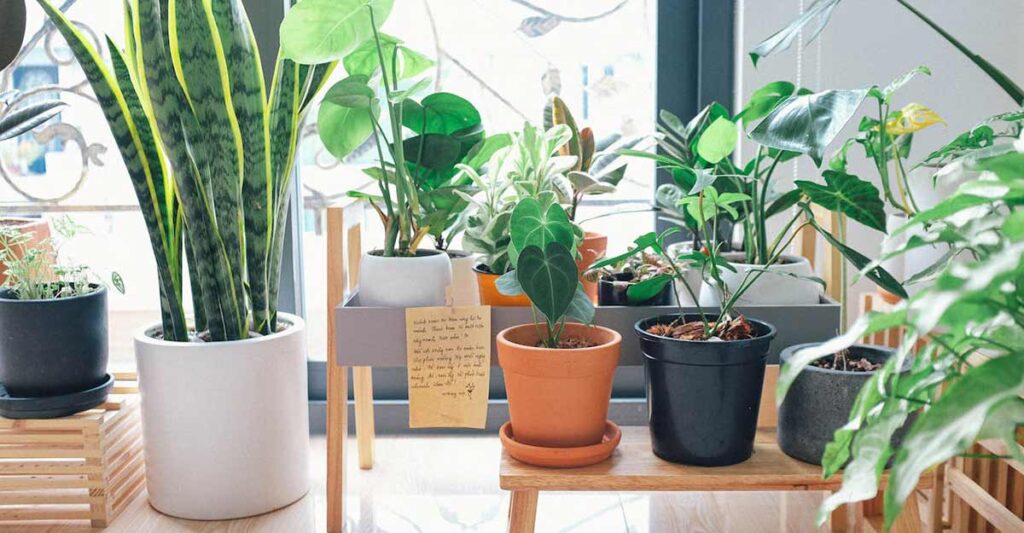Houseplants are a great decorative choice because they bring bright colors and fresh air to the environment. However, it is necessary to learn the best pruning techniques for plants in order to provide them with the correct care.
Details such as removing dead leaves, branches and flowers, as well as cutting off excess growth, should not be ignored. Other care is also necessary, such as fertilization and irrigation, to maintain the health of the plants.
Pruning techniques for houseplants
Indoor plants, such as ferns, lilies and snake plants, are always popular as decorative items. These and other indoor plants do not require much work to maintain or keep them looking beautiful, but there are some essential techniques.
For example, it’s important to use the right tools and research your plant’s species to learn about its specific needs. Below, we’ve put together a guide on when and how to prune houseplants.
 Image: Pexels
Image: Pexels
Read also: Teas that aid digestion and relieve unpleasant symptoms
1. Use appropriate tools
Dull blades damage plants, so scissors must always be sharp, even if they are not necessarily gardening scissors.
It should also be very clean. If it is dirty, soak it in a solution of water with 1 tablespoon of bleach and dry it with a cloth.
2. When should I prune my plants?
Winter is the ideal time for more intense pruning, as at this time the plants are in a dormant period. This means that the circulation of sap decreases due to the low temperature and less exposure to light. This way, the plant suffers less stress during handling.
Although nothing prevents pruning at other times of the year, these should be minor prunings, for cleaning or size control. Flowering plants should only be pruned after flowering, and do not do so if the buds are still closed.
3. Right angle
Cut dead leaves and branches at a 45° angle. Look for leaves and branches that are brown, discolored, excessively dry, or wilted. Cut these affected parts a little past their full length, at a 45° angle.
Never trim healthy, green-looking leaves and branches. If the entire branch is dead, cut it off completely and keep only the stem of the plant.
4. Cutting dead flowers
If you have flowering plants, you will also need to cut off any dead flowers. Check periodically for flowers that appear brown, discolored, wilted, or very dry to the touch. Cut them off at the base of their receptacle. This will encourage new buds to grow.
5. Cutting very long branches
Get rid of branches that are too long, loose, or hanging from the plant. This will allow the plant to grow more evenly and leafily.
Using the scissors, reduce the length of the branch by ⅓, always making a cut at a 45° angle.
6. Pruning by hand
If you have soft-stemmed plants, such as Hearts of the Valley or Ivy, you can prune them regularly using your hands. Use your thumb and forefinger to remove the tip of a stem, above where the leaf attaches to the plant.
Removing these tips gives the plant a more attractive shape and encourages it to grow proportionally in all directions. It also prevents hanging branches from appearing.
7. Pruning quantity
Always prune only 10% to 20% of the plant. And then, wait a few weeks to a month to prune it again. If you prune your plant too much, it will stunt its growth.
If you are unsure about how much to prune, you can always prune less and then re-evaluate after a few weeks.
8. Post-pruning treatment
After pruning, you should fertilize your plants. Apply a generic, soluble fertilizer. Dilute it in water to avoid burning them and spread it according to the product's instructions.
9. Cleaning dirt and grime
Large plant species with wide leaves can accumulate a lot of soil and dirt on their surface. To clean them, wipe them with a soft sponge or damp cloth, using only water.
Avoid using the same sponge or cloth for multiple plants to prevent the spread of bacteria and diseases from one to another. Do this regularly and your plants will always look vibrant and beautiful.
10. Don't over-water
Understanding when to water a plant is essential to its care. To know when your plant needs water, stick your finger about 2.5 cm into the soil. If it is not moist, it obviously needs water.
However, be careful not to over-water. Leaf loss, underdeveloped leaves with brown spots, moldy flowers and leaves are some signs that you are over-watering.
Plantix – an application that helps you grow plants
 Image: Play Store
Image: Play Store
THE Plantix is an application developed to identify plant diseases and offer different treatment options for them. From a photo of the diseased plant, the app provides the answers you need, based on its database. With it, you can learn more about plants for outdoor and indoor areas. And, of course, better understand when you should prune tomatoes, for example.
Plantix is only available for Android.
Did you enjoy our pruning guide for houseplants?
In addition to being a beautiful decoration, being a “plant parent” is a hobby that stimulates mental well-being, as it involves caring for and caring for plants. Using the right pruning techniques for plants provides great benefits for them.
It is possible to create a harmonious and stunning look for your houseplant just by taking good care of it. If you are a plant lover, follow these tips and achieve good health and a stunning look for your indoor garden, transforming your decor into a green paradise.

